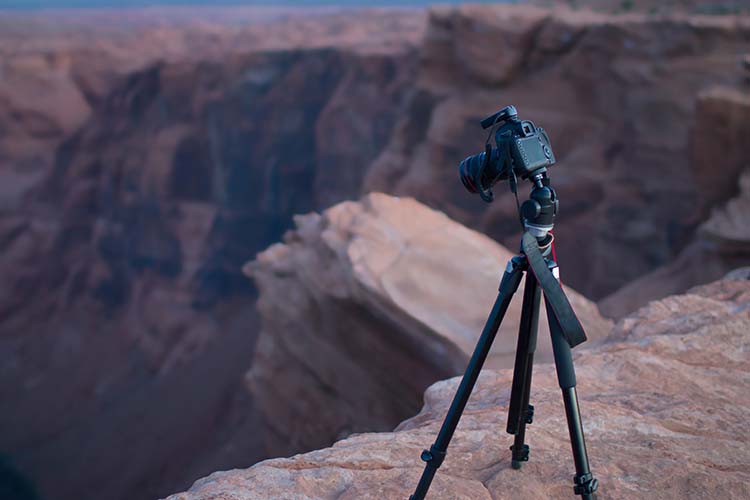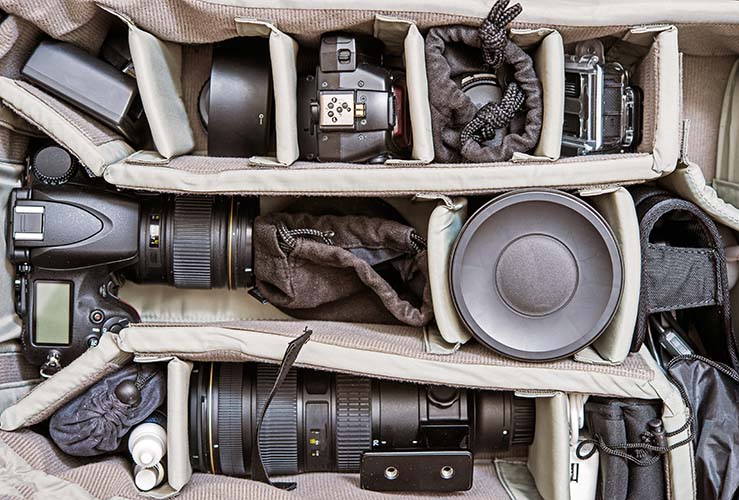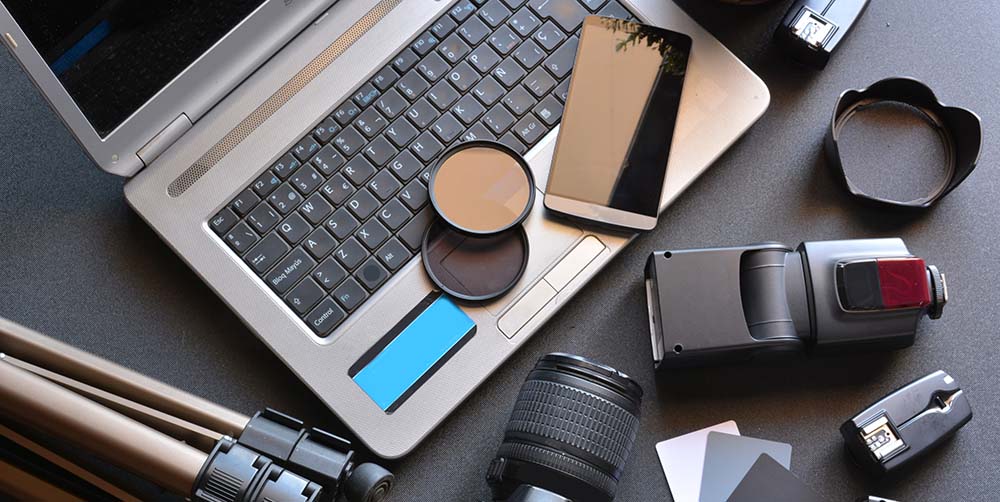There is something to be said for being prepared. There is also that moment every photographer has faced when they've brought way too much on their trip and find themselves stuck hauling around a bunch of useless weight. This might not seem like a big issue, but on long trips where heading back to the car or house to unload is not an option you'll be happy you packed light. Let's discuss the essentials that every photographer should carry with them. There are many extenuating circumstances that might allow for rain gear or ND filters but for the novice we'll just keep this to the basics.
- Camera Body
- Two Batteries
- Lenses
- Lens Hood
- Lens Cleaner
- Tripod
- Flash
- Pen and Paper
- Lightweight Rain Jacket
Start With The Most Important
It goes without saying that the camera is the one item you cannot forget on your daily trip. But many people realize they have forgotten the body of their camera once all their gear is packed. To avoid this embarrassment, make the camera body the first thing checked on your list. Along with your camera body, make sure to pack at least 1 extra battery in addition to the fully charged battery that should already be inserted into the camera. Some of your exposures may require using long shutter speeds that cause your camera to think longer and use more battery life. There are many tricks to avoid excessive battery usage but best practice is to always have extra batteries so you can operate your camera the way you feel most comfortable.
Lenses - Don't Go Overboard
Lenses are something many photographers can easily go overboard on when packing. First, take into consideration what you will be shooting and pack accordingly. If you are unsure, go with what is most practical. An 18-55mm and a 24-70mm or 24-105mm should suit all your needs just fine. Keep the lens quantity down and your back will thank you later. Along with your lens, you should always carry a lens cleaning kit. This includes a lens cleaning spray with a microfiber towel as well as a lens brush to clean all the nooks and crannies. The last lens accessory that must be utilized at all times is a lens hood. This very lightweight and small item can, in most cases, be easily removed if stored but once you have removed your camera from its case and are ready to shoot you should always use it. Yes, a lens hood will work to reduce lens flare and help to prevent lighting in your image where it's not wanted. It's also a very inexpensive way to protect your camera lens in case you drop your camera or turn a corner too fast and inadvertently bang it against the wall.
Tripod

Day or night, it is always recommended to use a tripod. No person can hold a camera as still as a tripod. Given certain lighting situations it is always better to have the Tripod then to not. To this point, unless you are specifically going out with the intention of using a tripod, find the most travel wise tripod as possible and do not go overboard with accessories or heads. 1 head unit and a portable / collapsible tripod should work great work daily shooting.
Other Essentials
A remote shutter or wireless app is a lightweight piece of equipment that should never go over looked. It allows you to expose the photograph without actually touching the camera. In situations where maximum stillness is required or if you're just sick of standing behind the camera, a remote in your camera bag can be extremely useful.

One single attached flash should always make your list as well. Dim lighting and sometimes an artistic effect make this lightweight item a must in every photographers bag. Each flash will take either AA batteries or possibly another form of charge. Make sure to have enough power sources to keep your flash charged.
While it seems rather archaic, a pen and paper almost always comes in handy. Sometimes the best way to illustrate your point is to draw it out for someone else to see. Another common practice is to create a list of images / places you would like to go and check them off your list as you complete them.
It is always recommended to have a very lightweight rain jacket in your bag. The reason isn't always to protect yourself from getting wet so much as it is cover the very expensive camera equipment you have invested in. Most DSLR's are somewhat water resistant this is only for very slight exposure to water. Any type of rain or direct water exposure needs to be dealt with immediately. A jacket is a nice way to protect your camera if you are not near shelter and a sudden downpour interrupts your photography. A more common occurrence for some than for others.
Being prepared when that perfect photo opportunity presents itself can make all the difference in the world. Beautiful moments are fleeting and difficult to capture if you're not ready. Take care when packing your camera bag to be ready to capture all of life's beauty as it happens.
